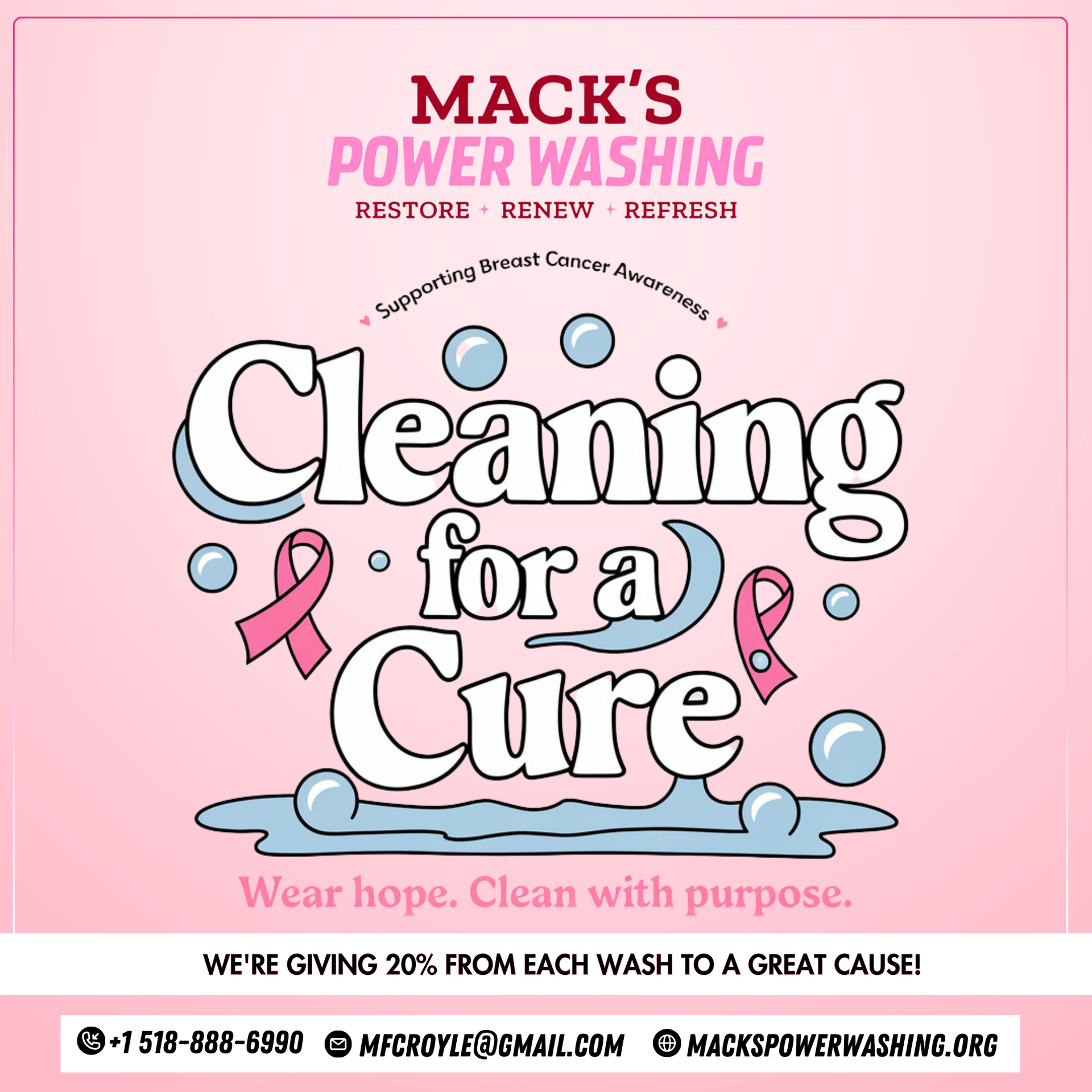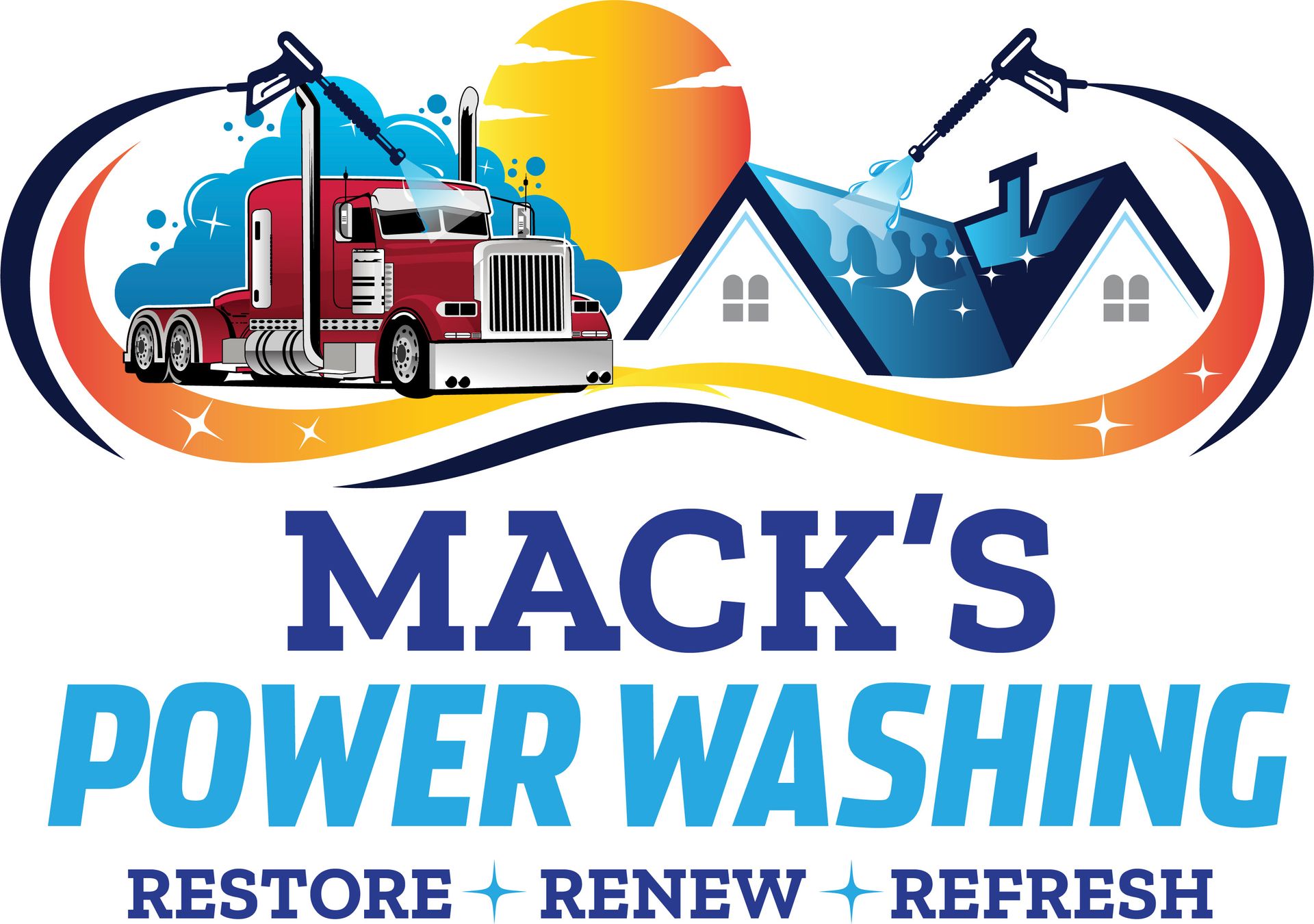
Email:
Phone Number:
Blog

By Mack Croyle
•
December 13, 2023
The Art of Renewal: Power Washing Statues to Preserve Timeless Beauty Statues convey stories about culture, history, and artistic expression with their austere presence. These recognizable buildings serve as a symbol of time passing through while also enhancing the attractiveness of public areas. These works of art may suffer damage from the elements over time, which may eventually dwindle their once-vibrant appeal. Here comes the transforming art of power washing, a technique that gives these monuments new life and brings them back to their former grandeur. The Patina of Time: Challenges Faced by Statues Statues are vulnerable to the effects of weathering since they are frequently composed of materials like marble, bronze, or concrete. Wind, rain, pollution, and biological growth can all slowly erode away at the fine features that the sculptor's hands have worked so hard to create. The end effect is a patina of pollutants, algae, moss, and dirt that may lessen the statue's striking appearance. But instead of seeing this as an inevitable end, a lot of curators and conservationists use power washing as a way to bring these classic works of art back to life. The Power of Precision: Choosing the Right Equipment When properly applied, power washing can remove many layers of dirt and impurities, restoring the statue to its former splendor. But accuracy is essential. Care must be used when selecting the tools, pressure settings, and cleaning solutions to prevent any damage from being done to the statue's delicate surfaces. 1. Pressure Settings: Choosing the right pressure setting is essential to keep the statue safe. While stronger materials like bronze may tolerate greater pressures, more delicate materials like marble are usually best suited for low pressure settings. It's crucial to test on a tiny, discrete region first, start at a lesser pressure, then increase it gradually if necessary. 2. Cleaning Agents: The kind of cleaning product that is utilized is determined by the pollutants' nature and the statue's composition. To improve the cleaning process, use gentle detergents or specialty cleaners made for the particular material. To make sure that the cleaning solution does not negatively affect the statue's surface, care must be taken. 3. Temperature Considerations: Warm water can enhance the efficacy of power washing, particularly in the removal of specific kinds of pollutants. To save the statue from thermal stress, however, extremes in temperature—whether hot or cold—should be avoided. The Restoration Process: Step by Step 1. Assessment: Prior to beginning the power washing procedure, the statue must be carefully inspected. Determine the kind of material, the degree of contamination, and any regions that would need extra care because they are vulnerable. 2. Preparation: Preserve the surrounding areas from any possible overspray or runoff. Benches, plants, and other elements that can be impacted by cleaning products should be covered. To control expectations and guarantee safety, it's also a good idea to notify stakeholders or the general public about the cleaning procedure. 3. Testing: Perform a small-scale test on a discrete region of the statue before using the power washer on the entire piece. This reduces the chance of damaging the statue as a whole by helping to select the right pressure and cleaning solution. 4. Power Washing: Start the power washing procedure methodically, working your way down from the top. Make wide, sweeping movements to prevent uneven or streaky cleaning. In between passes, take a moment to evaluate your work and make any required corrections. 5. Detail Work: Use specialist attachments or lower pressure settings for details or hard-to-reach locations. For sensitive features, hand cleaning with gentle brushes can also be required. 6. Rinsing: After the power washing is finished, give the statue a good rinse with clean water to get rid of any leftover cleaning solution. In order to avoid residue buildup, which could eventually damage the statue, this step is essential. 7. Drying: Before revealing the beautifully restored statue, let it air dry entirely. Thermal stress may result from applying too much heat when drying. Case Studies: Power Washing Success Stories 1. The White Marble Majesty: The once-luminous surfaces of a public square filled with white marble statues had become muted due to aging and pollution. Conservationists were able to restore the statues' former splendor through a painstaking power washing procedure, drawing onlookers' attention and rekindling a sense of community pride. 2. Reviving the Bronze Legacy: Over time, a historic bronze statue honoring a momentous occasion had taken on a greenish patina. The monument was preserved for future generations by restoration specialists who were able to unveil the fine intricacies of the bronze casting by precise manipulation of pressure settings and the application of specific cleaning solvents. The Ethics of Statue Cleaning Statues can be given new life by power washing, but the procedure must be done with a sense of ethical responsibility. The statue's historical and cultural significance must be taken into account, and care must be taken to preserve its integrity during the cleaning procedure. 1. Consultation: Consult conservators, art historians, or other appropriate authorities before beginning any cleaning efforts to make sure the chosen procedure complies with preservation best practices. 2. Documentation: Make sure to take detailed pictures of the statue before, during, and after the power washing procedure. This recording is an important historical record for the conservation efforts of the future. 3. Long-Term Preservation: Power washing is but one facet of maintaining statues. To reduce the need for extensive cleaning later on, think about putting long-term preservation techniques into place, such as protective coatings or regular cleaning routines. Conclusion: Preserving the Past, Present, and Future Power washing statues is an art form in and of itself, not just a repair technique. To bring these silent storytellers back to life, a careful balancing act between accuracy, skill, and moral considerations is needed. We can guarantee that monuments will endure as classic icons that pique the interest of future generations by accepting the transformational potential of power washing. A fresh story of beauty and tenacity emerges in the dance between water and stone, resonating through the passageways of time.

By Mack Croyle
•
November 13, 2023
Bringing Back the Shine: Your Ultimate Guide to Power Washing Metal Gates Hey there gate guardians and curb appeal enthusiasts! Ever looked at your metal gate and thought, "Hmm, this could use a little extra sparkle?" Well, you're in for a treat! We're about to dive into the wonderful world of power washing, where grime meets its match, and your gate gets a VIP treatment. The Magic Behind Power Washing Imagine a spa day for your metal gate – that's essentially what power washing does. It's like a high-pressure shower, but instead of water, it's blasting away dirt, rust, and anything else that dared to dull your gate's shine. Why Power Wash Your Metal Gates? 1.Banish the Grime: A good technique to remove accumulated dust, filth, and other debris that can detract from the aesthetics of your metal gate is to power wash it. Because the high-pressure water can get into crevices and nooks, a complete cleaning is guaranteed. This keeps materials from accumulating that can corrode the metal in addition to improving the gate's aesthetic appeal. 2. Rust's Worst Enemy: Rust is extremely common with metal gates, especially when they are left outside and exposed to the elements. One preventative step against rust growth is power cleaning. You can remove existing rust from the gate and establish a barrier that prevents new rust from developing by cleaning it on a regular basis. This preventive measure is essential to preserving the metal's visual appeal and structural integrity. 3. Age Gracefully: Metal gates age naturally, just like any other exterior element. Regular power cleaning, however, can promote a graceful aging of the gate. By keeping harmful materials from building up and eliminating impurities, you let the metal weather organically without accelerating deterioration. This guarantees that your gate will continue to be of the highest caliber, adding to the allure of your home. Gathering Your Weapons of Mass Shine Before you embark on this journey, let's gather our superhero squad: 1, Power Washer: The power washer, the mission's protagonist, uses a high-pressure water stream to clean your metal gates of filth, debris, and other impurities. Prior to beginning your cleaning campaign, make sure it functions properly. 2. Nozzles: Consider these as the various tools in your toolbox. You can change the nozzle's spray pattern to adapt the pressure to the work at hand. Select the appropriate nozzle based on the degree of cleaning force required for your metal gates. 3. Safety Chic Gear: This mission's heroic attire for you! Arm yourself with protective gear, such as gloves to guard your hands from flying debris, goggles to protect your eyes from it, and maybe a raincoat or other waterproof clothing to keep dry during combat. 4. Detergent Delight: As any superhero would know, a good detergent made especially for power cleaning serves as their hidden weapon. This will increase the cleaning effectiveness, particularly for tough stains and dirt. 5. Brush or Scrubber: An interactive approach is required at times. Your reliable companion when dealing with little patches of grime or regions that require special care is a brush or scrubber. Verify that it is safe for your power washer and won't harm the metal. 6. Water Source: A water source is necessary for your heroes to refuel and regroup. Make sure a hose or other nearby water supply is prepared for use. This guarantees that you will always have water available for use during your job, enabling you to overcome the dirt and grime on your metal gates without hindrance. The Show Begins: Step-by-Step Gate Glow-Up 1. Ready, Set, Prep! Set up the space where your cleaning glasses will be. For your gate glow-up, clear the area, remove any obstructions, and cover any close plants or fragile objects. 2. Inspect and Repair with Love Examine your metal gate for wear or damage before to the major event. Take care of small fixes like loose bolts or peeling paint to show it some love. This guarantees that your gate will be in excellent shape for the impending cleaning frenzy. 3. Detergent Drama Take the stage with your heroic detergent. Use a liberal amount on the metal gate, paying particular attention to any places that have lingering stains or dirt. Allow the detergent to do its thing, dissolving the grime and getting the area ready for the big power washing reveal. 4. Power Washer Prep The power washer is about to be on display! Fit your gate with the right nozzle for the job and blast your gate with high-pressure water. Proceed carefully, covering the whole area and giving close attention to any fine features or cracks. Observe how your metal gate's secret beauty is unveiled when the grime and detergent drama fade. 5. Stains, Meet Your Match Bring in your brush or scrubber partner for those stubborn spots that just won't go away. To make sure the stained parts match, gently scrub them. This practical method focuses on particular areas, guaranteeing a comprehensive and brilliant outcome. 6. Rinse Off the Drama Rinse off any detergent residue left on the lens after power washing. Make sure everything is ready for the big debut of your gate. Your metal gate will appear renewed after the high-pressure wash and prepared for close-up photography. 7. Inspect and Let It Dry Spend a moment conducting a post-cleaning assessment. Admire the change and take care of any places that may require touch-ups. After you're happy, let your metal gate shine in the spotlight while it air-dries. With a renewed radiance, your gate appears, signaling the impending grand finale. Maintenance Tips: Because Gates Deserve VIP Treatment To keep that gate looking like a rockstar, follow these tips: 1. Spot Checks: Make routine spot checks at your gate to treat it like the VIP that it is. Look out for any indications of rust, wear, or damage. Early problem solving keeps problems from becoming bigger hassles and guarantees that your gate is always ready for the red carpet. 2. Yearly Spa Day: Give your gate the annual spa day treatment. This calls for a comprehensive cleaning procedure—possibly even a power wash—to get rid of accumulated filth and grime. By avoiding corrosion and wear, this not only keeps the gate looking good but also increases its lifespan. 3. Coat of Armor: Apply a fresh coat of paint or protective finish to your gate to give it a shield of defense. This not only improves its look but also acts as a barrier against the weather, protecting the metal from the damaging effects of the environment and delaying the onset of rust. 4. Quick Fixes : VIPs take care of problems right away, without waiting for them to get worse. Have a supply of easy fixes on hand for little fixes. Tighten loose bolts, fix chipped paint, and take care of any minor problems right away. This proactive strategy guarantees that your gate will always remain a VIP. The Grand Finale: A Gate Fit for Royalty There you have it, gate enthusiasts! Your metal gate's journey from drab to fab is just a power wash away. So, gather your tools, don your safety chic gear, and let the gate glow-up commence. The red carpet awaits, and your gate is about to steal the show – it's not just a gate; it's a star! ✨
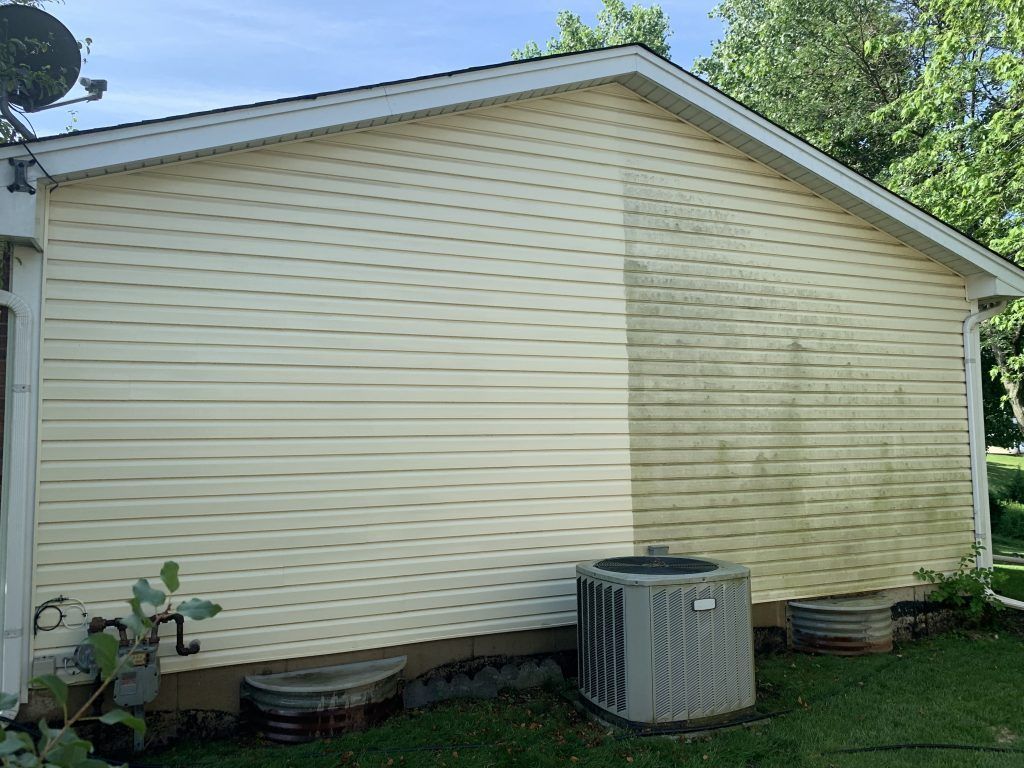
November 12, 2023
Showing the Power of Siding Power Washing: A Comprehensive Guide Introduction The outside of a house is usually the most important aspect to maintain. Power washing your siding is one of the best ways to rejuvenate the external look of your house. This strong and effective cleaning technique can revitalize your siding and restore its original appearance. We will examine the nuances of siding power washing in this in-depth tutorial, including its advantages, the procedure, and crucial pointers for a fruitful cleaning project. The Benefits of Siding Power Washing 1. Enhanced Curb Appeal The outside of your house is the first thing that visitors and passersby observe, and first impressions do count. Your siding's appeal may be lowered over time by the accumulation of filth, grime, and environmental toxins. These accumulation layers can be removed by siding power washing, exposing the actual beauty of your home's exterior. The end effect is a bright, new appearance that immediately improves curb appeal. 2. Prevention of Damage Siding power washing is essential for preventing long-term damage, even if it is not aesthetically pleasing. On siding, mold, mildew, and algae can grow and cause degradation. Frequent power washing helps get rid of these dangerous substances, extending the life of your siding and shielding it from further damage. 3. Health and Safety Siding that has mold and mildew growing on it can be dangerous to one's health in addition to damaging the structure. By getting rid of these impurities, power washing makes your home healthier for you and your family. A tidy outside also lessens the chance of trips and falls, improving safety all around your house. 4. Cost-Effective Maintenance Power washing is a more affordable maintenance option than major repairs or siding replacement. Regular cleaning will ultimately save you money by averting the need for more costly repairs or replacements. It's a proactive strategy for maintaining the structural integrity and worth of your house. The Siding Power Washing Process 1. Preparation It's crucial to prepare properly before power cleaning. Start by looking for any indications of damage, like cracks or loose panels, on your siding. First, make any necessary repairs. To keep plants, fixtures, and electrical outlets safe from water and cleaning agents, cover them. 2. Choosing the Right Equipment Choosing the right power washer is essential to a thorough cleaning procedure. To regulate the water pressure, the power washer should feature an adjustable nozzle. A pressure range of 1,500 to 2,500 PSI (pounds per square inch) is adequate for most siding. Making the wrong choice can lead to siding damage due to excessive pressure. 3. Cleaning Solutions To remove tough stains, mold, and mildew, you may need to use a cleaning solution in addition to water. There are many siding cleansers on the market, or you can make a homemade solution by combining mildewcide, detergent, and water. Starting from the bottom and working your way up, apply the cleaning solution and let it sit on the surface for a few minutes before washing. 4. Safe Power Washing Techniques To prevent damage, keep a safe distance from the siding when power washing. Aim the nozzle downward, directing the spray with a 45-degree angle. By doing this, water is kept from getting behind the siding, which could cause problems with moisture. For thorough cleaning, work in small pieces and overlap each pass. 5. Rinsing and Drying Rinsing well is essential after using the cleaning solution and power washing. Make sure all cleaning supplies are thoroughly removed from the area. Before making any assessments, let the siding completely dry. This is also a good moment to review the outcomes and take care of any areas that could need more attention. Tips for a Successful Siding Power Washing Experience 1. Timing is Key Select a day for power washing that has moderate weather. The effectiveness of cleaning agents and the procedure itself may be impacted by extreme heat or cold. To avoid the cleaning solution drying too soon, overcast days are best. 2. Safety First Put on safety glasses and gloves, among other protective gear, to keep yourself safe from cleaning agents and debris. Make sure the ladder is steady and on a level surface if you're using one. 3. Test in an Inconspicuous Area Test the equipment and cleaning solution in a discrete area before moving forward with a full-scale power washing. This lets you make sure there won't be any harm done and assess the effectiveness. 4. Professional Assistance for Challenging Cases If there is a lot of mold or mildew growing on your siding, or if you are not sure what pressure is right, you might think about getting a professional power washing service. They can safely and successfully handle difficult cases because they have the knowledge and tools necessary. Conclusion Power cleaning siding has dramatic effects that go beyond appearance. It's a preventative step to protect the external integrity of your house, improve curb appeal, and make your home healthier. You can start a successful power washing adventure that revitalizes your siding and improves the overall look and feel of your home by understanding the procedure and adhering to best practices. Take advantage of the long-term advantages of power washing your siding by include it in your normal home maintenance regimen.
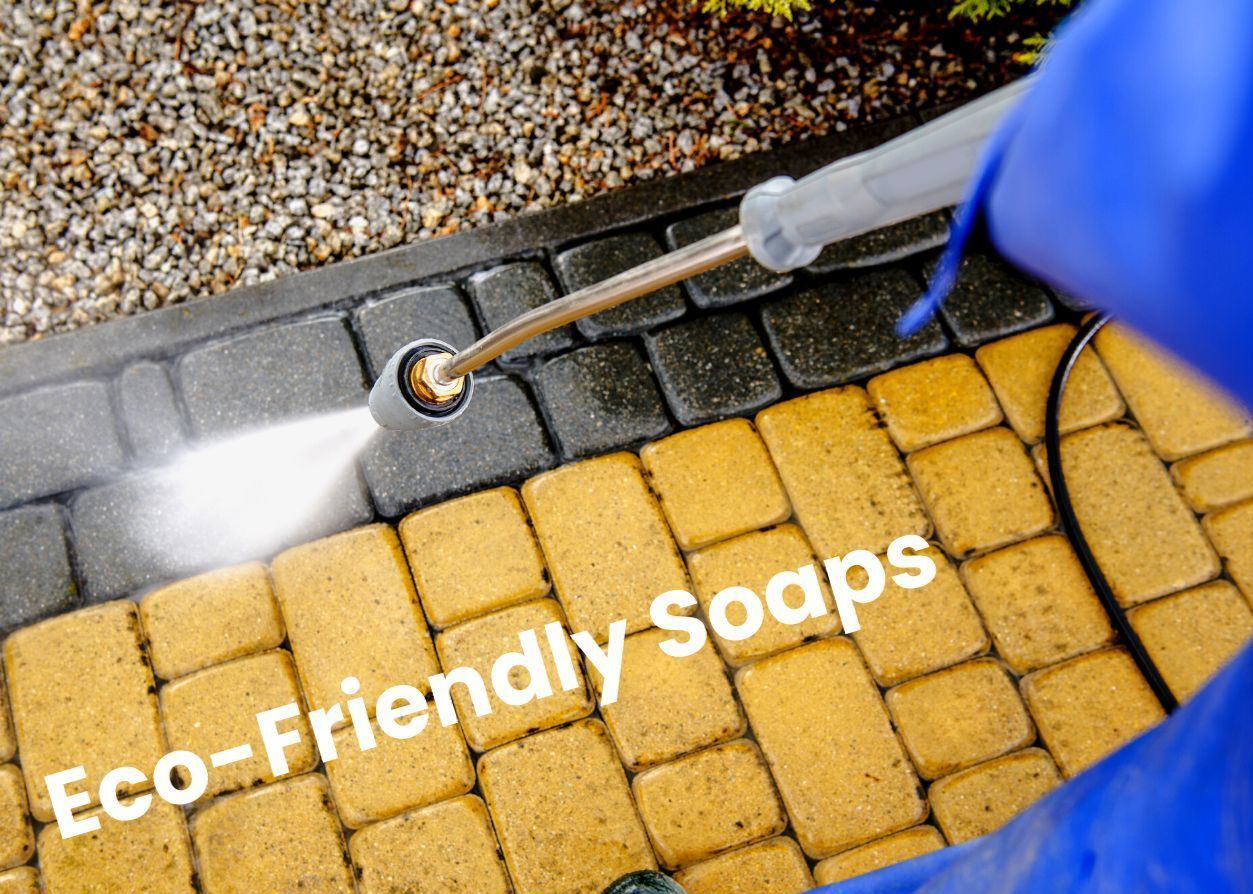
By Mack Croyle
•
November 11, 2023
The Green Clean: Unveiling the Eco-Friendly Side of Power Washing The environmental effect of every element of our everyday life is being closely examined in the pursuit of sustainability. Remarkably, power washing—a procedure that's frequently linked to overuse of water and chemical runoff—is turning green. In this section, we will examine the environmentally friendly aspects of power washing and how this cleaning technique may be used to minimize its impact on the environment. 1. Water Wisdom: Precision in Power Washing Power washing is not an exception to the worldwide conversation on water conservation. High-efficiency equipment that reduces water waste has been developed as a result of advancements in power washing technology. The appropriate quantity of water is utilized for the work at hand thanks to precision nozzles, water-recycling systems, and pressure settings that may be adjusted. This responds to environmental issues as well as the increased demand for wise water use in a time of water shortage and climate change. 2. Biodegradable Bliss: Saying Goodbye to Harsh Chemicals Power washing is typically associated with the use of harsh chemicals, which raises questions regarding the environmental effects of such chemicals. But the green trend in power washing calls for a big move toward biodegradable detergents. These cleaning products are designed to decompose organically, leaving no toxic residues in their wake. Because dangerous chemicals are not released into the environment, the cleaning procedure not only leaves surfaces free of filth and grime but also helps to maintain a healthy ecology. 3. Power Washing Eco-Friendly Surfaces 1. Concrete: Driveway, sidewalks , and patios made of concrete make great candidates for power washing. Concrete's resilience makes it possible to clean it well without worrying about breaking it. Concrete surfaces can be given new life by power washing, which is an environmentally responsible way to get rid of accumulated grime, stains, and pollutants. 2. Brick: Power washing works wonders on brick surfaces, whether they are a pathway or a portion of the outside of your house. Brick can be cleaned with power washing tools without causing harm because of its changeable pressure settings. Moss, mildew, and other undesirable materials can be removed by power cleaning, bringing out the inherent beauty of brick surfaces. 3. Stone: Power washing is useful for natural stone surfaces, such as those used in outdoor features or landscaping. Power washing is an efficient and environmentally responsible method of eliminating dirt, algae, and stains from stone surfaces, be it patios, retaining walls, or ornamental stone pieces, all without sacrificing the structural integrity of the stone. 4. Wood: Decks , fences , and outdoor furniture made of wood can be cleaned with power washing methods. To prevent harming the wood fibers, it is essential to utilize lower pressure settings. Without the need for harsh chemical treatments, power washing may efficiently remove dirt, mildew, and grime, giving hardwood surfaces a revitalized appearance. 5. Vinyl: Power washing is appropriate for vinyl siding on houses and other buildings. Vinyl surfaces can have their vibrancy restored by power washing, which offers a comprehensive yet gentle cleaning solution that gets rid of accumulated grime and algae. This method is better than using chemical cleansers, which could harm the environment. 6. Metal: Power washing methods can be used to clean metal surfaces, such as outdoor metal furniture or wrought iron fences. The pressure settings can be adjusted to effectively clean without harming the metal. For metal surfaces, power washing is a more environmentally friendly option than chemical cleaning techniques. 7. Pavers: Power washing is an efficient way to clean paved surfaces, such as interlocking pavers used in driveways or pathways. The procedure revitalizes the paved area's appearance by getting rid of moss, weeds, and stains. An environmentally friendly way to preserve pavers without using dangerous chemicals is to power wash them. 4. Steam Power: Chemical-Free and Powerful If you want to completely avoid using chemicals, steam power washing presents itself as a greener option. Using steam to remove oil, dirt, and stains that are difficult to remove without the use of chemical additives is a very successful method. For those looking for a chemical-free and eco-friendly cleaning solution, steam power washing is the recommended option as it guarantees a complete clean and answers worries about chemical runoff. 5. Energy Efficiency: Power Washing in the Age of Sustainability The environmentally friendly evolution of power washing goes beyond water and chemical concerns to include energy efficiency. Energy saving was a key consideration in the design of contemporary power washers, which use less energy without sacrificing functionality. This contributes to the larger objective of shifting to greener and more sustainable energy methods while also lowering the carbon footprint connected with power washing. 6. Responsible Runoff Management: A Commitment to Clean Waterways An essential component of making power washing ecologically friendly is addressing discharge. These days, cutting-edge power washing systems have features like filtration and containment. By capturing pollutants and debris during the cleaning process, these features make sure that they don't end up in storm water drains or water bodies. Waterways may be made cleaner and healthier by power washing in conjunction with appropriate runoff control techniques. 7. Preservation Power: Extending the Life of Surfaces The goal of eco-friendly power washing is to preserve the surfaces being cleaned in addition to the cleaning procedure. Building and structural lifetime is enhanced by power washing, which efficiently eliminates dirt, mold, and mildew. Thus, less waste is produced overall as a result of the decreased demand for regular replacements and repairs. Power washing is an environmentally friendly method that promotes waste reduction and resource efficiency, in line with the ideas of a circular economy. 8. Community Collaboration: Spreading the Green Message A few power washing firms are focusing on the community by implementing eco-friendly procedures and raising awareness of environmental issues. This entails working with neighborhood groups, taking part in cleanup campaigns, and instructing customers on eco-friendly cleaning techniques. Through the promotion of environmental consciousness in local communities, these businesses support the joint endeavor to create a more sustainable future. In Conclusion: The Green Revolution of Power Washing In conclusion, the development of power washing into an environmentally friendly process is evidence of how old methods can adapt to changing environmental conditions. Power washing is made into a green cleaning option by the use of water-efficient technologies, biodegradable detergents, steam power washing, energy efficiency, responsible runoff management, and community involvement. Power washing is a clean and environmentally friendly solution for both residential and commercial areas, and it can coexist with environmental consciousness by adopting sustainable methods and making informed choices. When it comes to living sustainably, every decision counts. The eco-friendly power washing revolution is a big step toward a cleaner, healthier, and more ecologically conscious future—it's more than simply a fad.
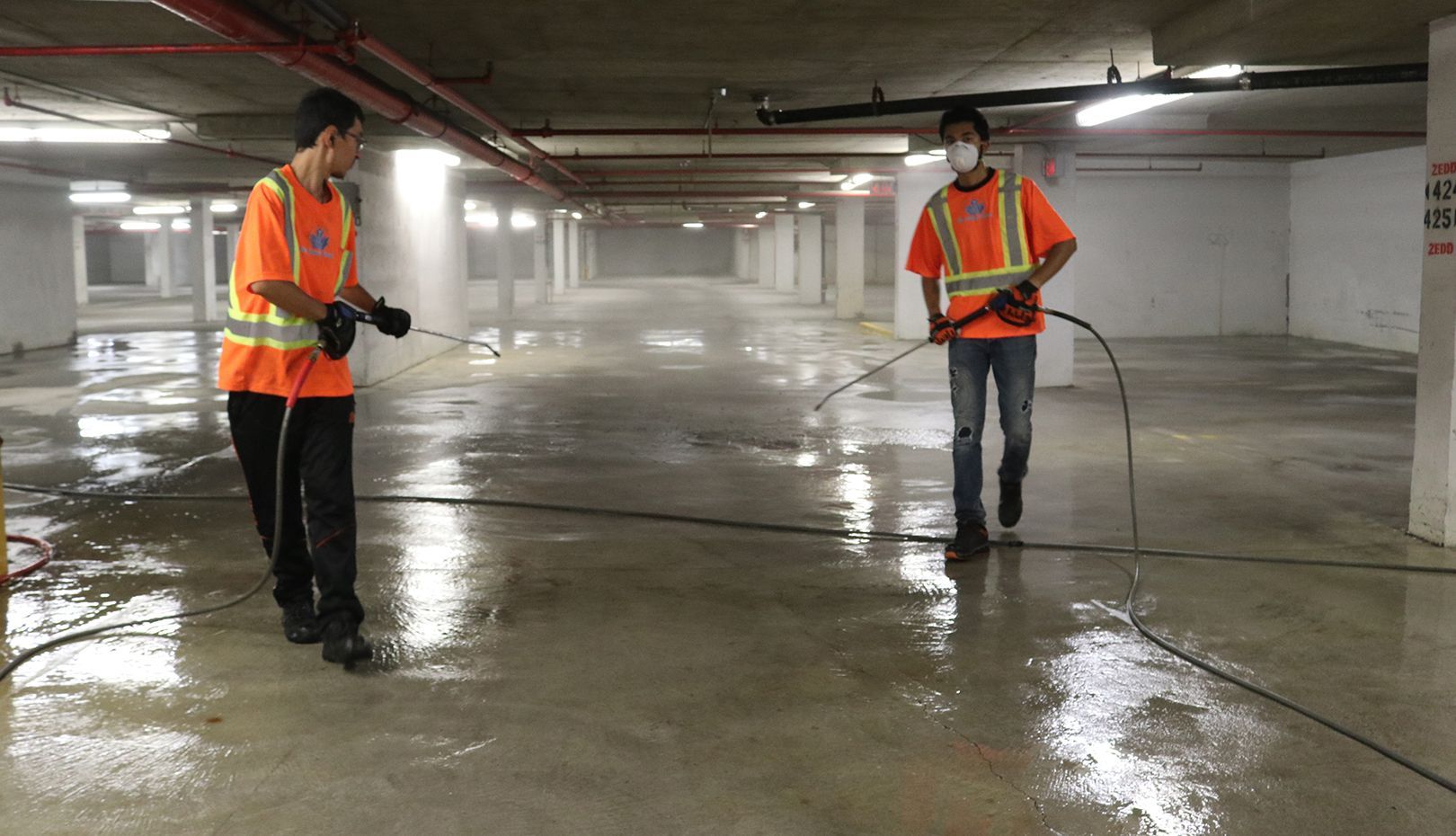
By Mack Croyle
•
November 10, 2023
The Ultimate Guide to Power Washing Parking Lots Parking lots are where a lot of clients and guests first come into contact. Since these areas eventually accumulate dirt, tire marks, oil stains, and other unsightly residues, regular maintenance is necessary. One of the best methods to restore a parking lot to its former glory is power washing. In this video, we'll go over the ins and outs of power washing parking lots and discuss the importance of maintaining a clean, welcoming environment. Understanding Power Washing: Professional Power washing , or pressure washing, is a technique that uses water under high pressure to clean surfaces. It entails the use of a specialized equipment that efficiently removes filth, grime, and stains from various surfaces by spraying water at varied pressures. Power washing parking lots is an incredibly effective approach to revitalize the space and improve its appearance overall. Benefits of Power Washing Parking Lots 1. Enhanced Aesthetics: Renew your parking lot and make a lasting impression on clients by using our skilled commercial power washing services to improve the curb appeal of your company. A well-kept parking lot greatly enhances your property's overall appearance. Power cleaning returns the surface to its original condition and leaves a clean, welcoming appearance by eliminating built-up grime, oil, and other stains. 2. Preventive Maintenance: Frequent power washing helps avoid long-term damage in addition to cleaning the surface. It gets rid of anything that can damage the surface, making parking lots last longer and requiring fewer major repairs. 3. Safety Improvement: Oil spills and accumulated dirt can cause surfaces to become slick, which can be dangerous. By removing these hazards, power washing makes the parking lot safer for both cars and pedestrians. 4. Environmental Benefits: Power washing is an environmentally friendly cleaning technique since it reduces the need for harsh chemicals by using high-pressure water. Steps for Power Washing a Parking Lot Step 1: Preparation Prepare the parking lot well before starting the power cleaning process. To tackle stubborn stains, grease, or grime, remove any obstacles like cars or debris and use the right cleaning products. Sufficient planning guarantees an ideal beginning point for the cleaning procedure. Step 2: Equipment Setup Making ensuring the power washing equipment is properly set up is essential before starting the power washing. Select appropriate nozzles, adjust the pressure settings, and use cleaning solutions that are compatible with the parking lot's surface. It takes precise setting to accomplish good cleaning and avoid harm. Step 3: Washing Technique Proceed with the cleaning procedure methodically. Utilizing overlapping strokes, begin at one end of the parking lot and work your way systematically across the whole surface. To guarantee a complete and effective cleaning procedure, adjust the pressure as needed, paying special attention to high-traffic areas and difficult-to-remove stains. Step 4: Post-Cleaning Inspection After the power washing is finished, conduct a thorough examination. Verify that the whole parking lot is uniformly clean and clear of any lingering dirt, stains, or markings. The thorough examination validates that the cleaning procedure was successful, resulting in a revived and immaculate parking lot. These exacting procedures are necessary to power wash the parking lot in an efficient and comprehensive manner, leaving behind a clean, renewed surface that improves the area's overall appearance and usability. Tips for Effective Power Washing 1.Choose the Right Equipment: Make sure the power washing equipment you choose is appropriate for the particular surface of your parking lot. To minimize damage and maximize the cleaning process, make sure the nozzles and pressure settings are adjusted to the surface material. 2. Safety First: Prioritize safety precautions at all times when power cleaning. To reduce the possibility of mishaps or personal injury, follow advised safety procedures, such as donning the appropriate protective gear, following equipment instructions, and keeping a safe distance from the high-pressure water stream. 3. Consider Professional Services: Think about hiring a professional power washing company, especially for huge parking lots or tough stains. Experts are equipped with the knowledge, tools, and hands-on experience needed to carry out a thorough and efficient cleaning process. 4. Regular Maintenance: Set up a regular timetable for power washing your parking lot. Regular maintenance is essential to maintaining the surface's structural integrity and cleanliness, preventing stubborn stains from building up, and extending the parking lot's lifespan. Conclusion: Power washing is becoming a crucial part of parking lot upkeep and management, with several significant advantages that go beyond simple cleanliness. Power washing is a safety measure that guarantees a hazard-free environment, reducing potential accidents and boosting the well-being of customers and visitors, in addition to its esthetic impact. The value of the technique goes even farther because it prolongs the life of the parking lot. Power washing protects the surface by getting rid of dirt, oil, and collected debris. This lessens the chance of structural damage and keeps the surface durable over time. Proactive care not only reduces the need for costly repairs down the road, but it also shows that the parking lot's condition will be maintained.
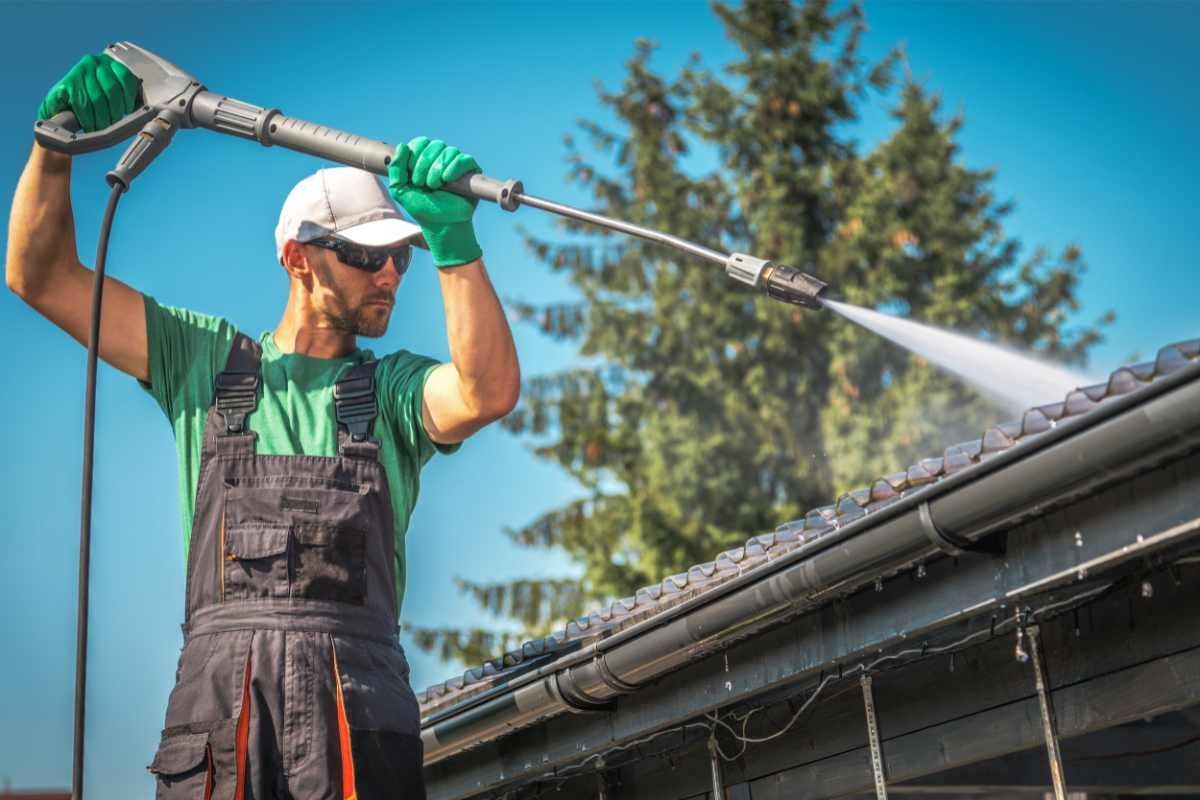
By Mack Croyle
•
November 9, 2023
Revitalizing Your Home: The Transformative Power of Gutter Power Washing Our home exteriors frequently take the brunt of the weather. Seasonal changes, wind, and rain may all clearly leave their mark on the surfaces, particularly on the gutters that are ignored. They can gather dirt, grime, leaves, and other debris over time, which can affect your home's aesthetic appeal as well as possibly result in damage and obstructions. Gutter power washing, the unsung hero of house maintenance, comes into play in this situation. Gutter power washing is a lesser-known but incredibly effective procedure that cleans and revitalizes gutters, improving the external beauty and performance of your home. Understanding Gutter Power Washing: Washers, made to shoot a powerful spray of water to push the collected muck away and clean it out. Gutter power washing is the process of cleaning gutters with high-pressure water to get rid of debris, leaves, mildew, and other buildup that has collected in these areas. The procedure frequently calls for the employment of specialist tools, including pressure The Benefits of Gutter Power Washing: Preservation of Your Home's Integrity: A buildup of material in your gutters may cause a water backup, which might harm your siding, roof pressure washing, and possibly the foundation of your house. You may avoid obstructions and make sure that melting snow and rainwater run easily away from your house, protecting its structural integrity, by power washing your gutters on a regular basis. Enhanced Curb Appeal: Clean gutters may dramatically improve the external appeal of your home. Overflowing gutters can leave stains and streaks that take away from the overall appearance of your home. Power cleaning your gutters not only gets rid of these stains but also gives your house a clean, updated appearance. Prevention of Pest Infestation: Pests such as flies, rodents, and mosquitoes find a home in clogged gutters. Frequent power washing keeps your house free from such infestations by removing these breeding grounds. The Process of Gutter Power Washing: Gutter power washing is a specialist procedure that, for best results, calls for the appropriate tools and methods. Usually, the following procedures are involved: Assessment: The gutters are first inspected to ascertain the amount of filth and debris present and whether any repairs are necessary. Preparation: Large debris is physically removed before the power cleaning begins. To avoid any harm during the procedure, precautions are also made to protect surrounding surfaces and plants. Power Washing: Gutter cleaning is accomplished by using a power washer with the proper nozzle and pressure settings. Clean gutters are left behind as a result of the high-pressure water's ability to remove collected dirt and rinse it out. Post-Cleaning Inspection: After the power washing is finished, a last check makes sure that all the debris has been removed and the gutters are operating at their best. Choosing a Professional Service: Although there are do-it-yourself alternatives, hiring a contractor to power wash your gutters frequently produces better results. Professionals can clean your gutters quickly and effectively without endangering your property since they have the knowledge, resources, and experience necessary for the job. DIY vs. Professional Services: Rentable power washing machines are available for homeowners who want to tackle projects on their own. That being said, care must be taken to prevent harm to siding, roofs, or gutters. Accidental damage can result from inexperience or from utilizing the wrong pressure levels. Professional services, however, offer assurance and experience. They are aware of the proper pressure settings, how to use them, and have put the required safety precautions in place. They frequently provide other services like gutter inspections and little repairs, too. Maintenance and Frequency: The amount of trees close by, the surrounding environment, and the weather all affect how frequently gutters need to be power washed. To maintain the effective operation of your gutters, it is generally advised to perform this cleaning at least twice a year, preferably in the spring and fall. Environmental Considerations: It's important to consider the ecology when choosing gutter power washing. Professionals usually take steps to ensure that runoff water is managed ethically and utilize eco-friendly cleaning products. Conclusion: Although gutter power cleaning may seem like a small part of house care, it has a significant impact on the general condition and aesthetics of your house. It's a cheap investment that can improve the curb appeal of your house and save major damage. In addition to protecting your property, keeping your gutters clean also makes your home safer and more aesthetically pleasing. Making sure your gutters are clear of debris and clean is an essential part of house maintenance, whether you decide to do it yourself or hire a pro. Recall that keeping your home's outside clean, beginning with your gutters, protects it and improves its overall appearance. Thus, why not give your house a facelift and allow gutter power washing's transformational potential to do its magic?
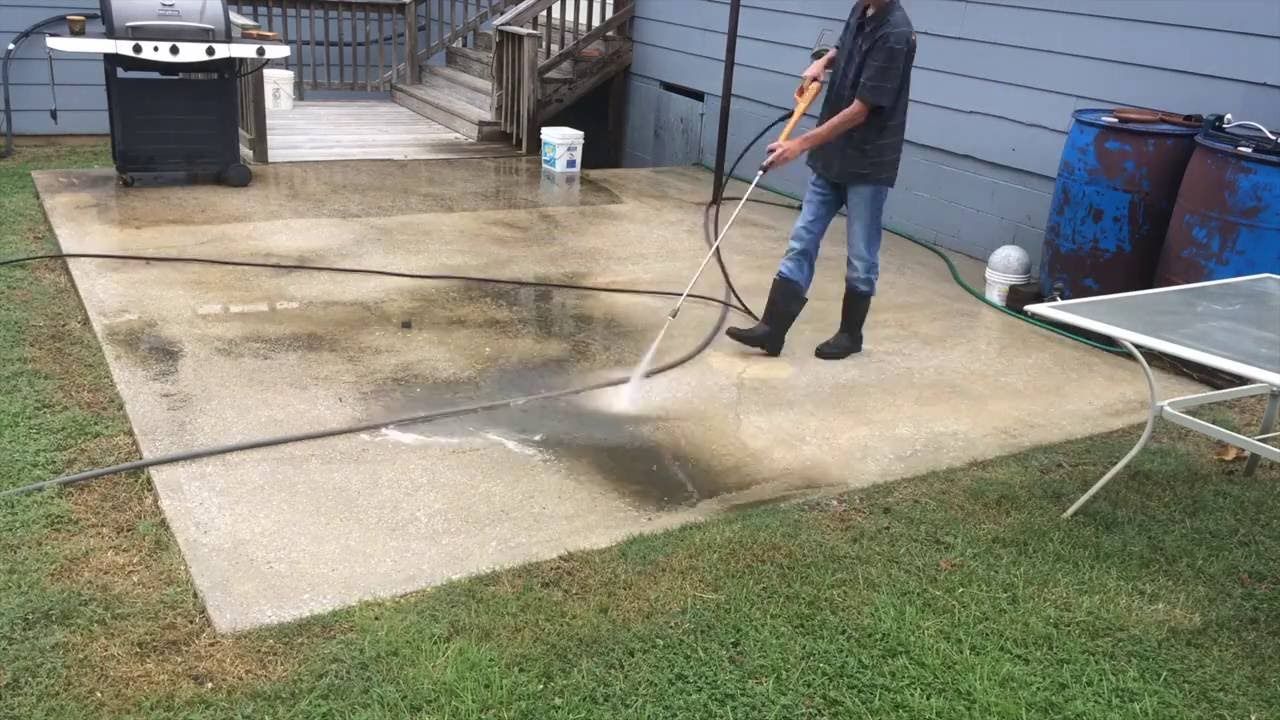
By Mack Croyle
•
November 7, 2023
Embrace the Great Outdoors: The Magic of Patios Ahh, patios: those lovely additions to our houses that invite us to enjoy the great house exterior , soak up the sun, and breathe in the fresh air. These are the havens where coffee in the morning seems more energizing, where family get-togethers become happier, and where evenings become peaceful times spent beneath the stars. Patios are an extension of our lives, but they also represent a way of living that invites us to enjoy life a bit more. Nature's Nook: Your Cozy Patio Escape The appeal of a patio is its capacity to function as an outside sanctuary, obfuscating the distinction between inside comfort and the outdoors. Patios provide a retreat, a peaceful sanctuary, whether they are large decks encircled by lush vegetation or little balconies facing a busy street. Designing Your Personal Oasis: Designing a patio that reflects your vision requires combining many components such as furniture, decor, and landscaping into a cohesive whole. Practicality and unique touches are what make a patio ideal, not grandeur. Consider warm sitting arrangements with colorful throws and cushions, a charming table with potted plants, and mood-setting ambient lighting. Not to mention the fragrant addition of herbs growing in a corner or in flowering flowers, which bring both functionality and color to the area. The Social Heartbeat of Patios: Patios naturally encourage social interaction. They go from being a peaceful haven to a center for lively conversations with ease. These areas tell stories of friendship and special times spent together, whether they are for late-night stargazing with loved ones, twilight dinner parties, or leisurely Sunday brunches. Wellness & Relaxation: There is no better source of natural therapy than a patio, as the therapeutic benefits of nature are widely known. It's a spot to do yoga in the morning, curl up with a nice book, or just relax after a demanding day. The overall sense of well-being is enhanced by the sounds of nature, the touch of the breeze, and the sunlight. Weathering the Seasons: Patios are flexible, changing to suit the whims of the changing seasons. They are the scene of colorful flowers and cool drinks in the spring and summer. nice blankets and warm lighting provide a nice atmosphere as fall arrives and the leaves begin to turn. With the correct heating options, a patio may be transformed into a cozy winter haven where you can enjoy the beauty of the season from a comfortable vantage point even in the dead of winter. Embracing Sustainability: Patios frequently provide a surface for eco-friendly living. They may be a demonstration of ecologically friendly decisions, enabling us to live in balance with the environment. Examples include repurposed furniture, eco-friendly décor, and rainwater harvesting systems. Conclusion: Patios offer a haven of balance in a world where everything rushes at breakneck speed. Their message is to appreciate the small pleasures in life by decelerated living. These backyard getaways are an extension of our souls, not just of our houses. Take advantage of the patio lifestyle whether you live in a city with a tiny balcony or a suburban area with a large deck. Allow it to become your haven, your haven from the outside world, a place to cherish the moments and weave memories. I hope your patio serves as the point where the outside and indoors come together and your heart is comforted by the beauty of the world outside your door. Raise a glass to patio magic!
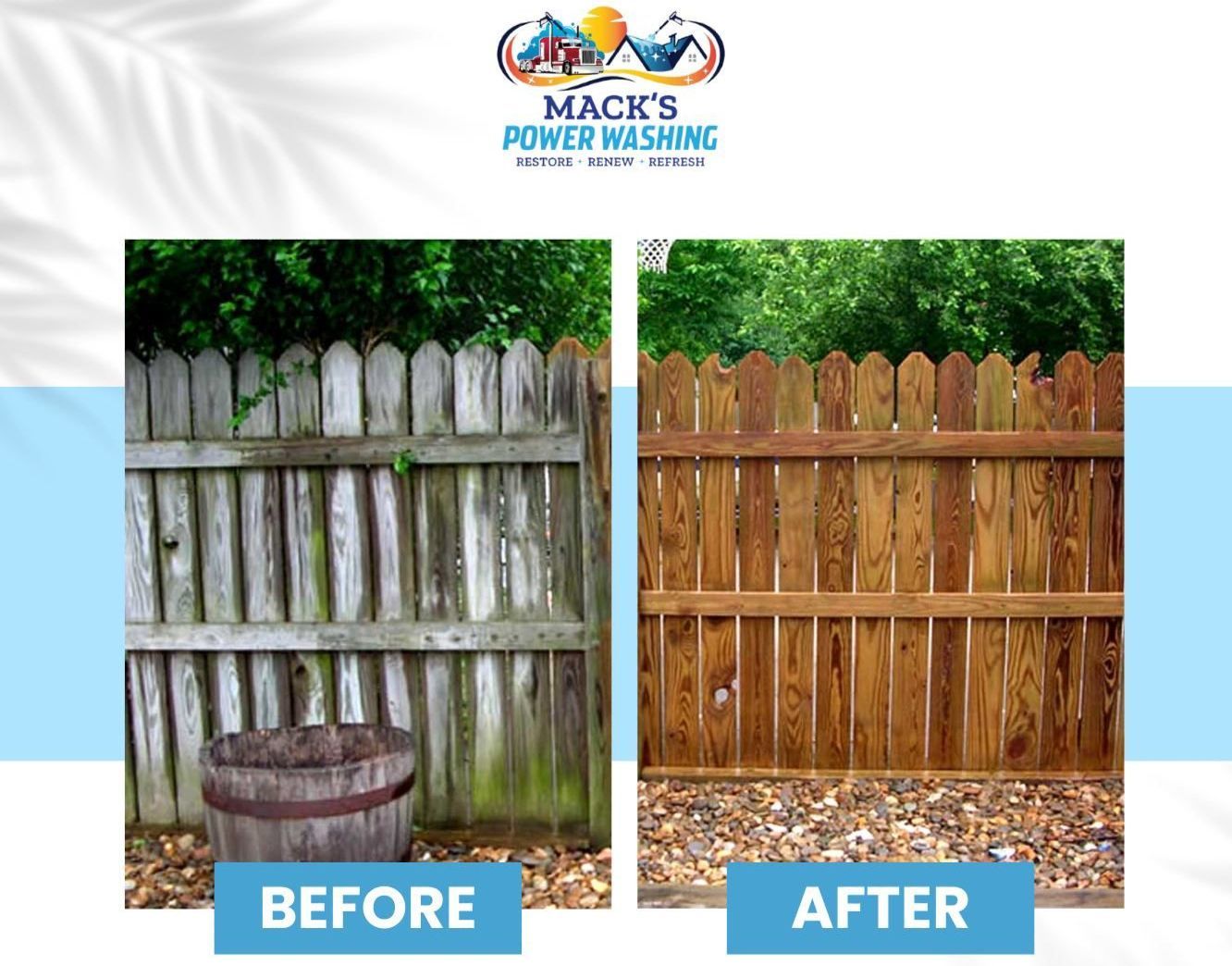
By Mack Croyle
•
November 4, 2023
Your Comprehensive Guide to Restoring Fence Brilliance through Power Washing: Introduction: Your home's overall appearance and value can be greatly increased by a neat, well-kept fence. But weathering and grime buildup over time can make your fence appear worn, lifeless, and dirty. Thankfully, power washing is a revolutionary technique that brings your fence back to its previous splendor. We'll get into the specifics of fence power washing in this extensive guide. We'll go over everything you need to know to make your fence shine, from comprehending the procedure to its advantages, safety measures, equipment requirements, and commonly asked questions. For getting service visit know Fence professional Power Washing Advantages: 1. Improved Visual Appeal: Power washing may revive the look of your fence right away by getting rid of built-up dirt, filth, mold, and mildew. This procedure brings out the inherent beauty of the wood or other materials, resulting in a modern, welcoming appearance for your home. 2. Extended Lifespan: Frequent upkeep, such as power washing, can help your fence last longer by preventing rot and decay brought on by mold, mildew, and other environmental elements. Additionally, it gets the surface ready for painting or resealing, which can further shield the wood. 3. Property Value: An attractive and well-maintained fence raises the curb appeal and total value of your home. A well-maintained fence makes a good first impression on prospective tenants, buyers, or guests. Process of Fence Power Washing: Prior to starting the power washing, it's important to get ready: - Make sure the area surrounding the fence is clear of any obstructions. - To shield surrounding plants and fragile surfaces from the pressure and cleaning agents, cover them. Steps involved in power washing a fence: 1. Set up the equipment: Get a power washer, a stiff brush for tough areas, safety gear (gloves, goggles), and the right cleaning solution (light detergent or specialty fence cleaner). 2. Testing and Adjustment: Make sure the pressure isn't too high, which could harm the wood, by testing it on a tiny, discrete section of the fence before beginning. As needed, adjust the pressure. 3. Cleaning Solution Application: Use a sprayer or a power washer to apply the cleaning solution. Let it sit for several minutes in order for the filth and grime to dissolve. 4. Power Washing: If required, progressively raise the pressure from a low starting point. To guarantee thorough cleaning without causing any surface damage, maintain a constant spacing between the nozzle and the fence. Precautions: · To protect yourself from cleaning agents and debris, always wear the proper safety gear, such as gloves and goggles. · Keep a safe distance from the fence to avoid unintentional harm from intense pressure. · To reduce damage to nearby plants and animals, use cleaning methods that are eco-friendly . FAQs on Fence Power Washing: 1. How often should my fence be power washed? Ideally, power wash your fence once a year to preserve its longevity and good looks. Nevertheless, the frequency could change depending on how much the fence is exposed to the elements and the surrounding environment. 2. Can I use a pressure washer on any kind of fence material? Pressure washing is generally safe for wood, vinyl, and metal fences, but in order to avoid damaging the material, make sure you use the right cleaning solution and adjust the pressure. Lower pressure settings may be necessary for delicate materials. 3. After power washing, does the fence need to be repainted or sealed? It is advised to reseal or repaint the fence after power washing. In addition to improving the look, this shields the wood against harm in the future. Conclusion: Power washing your fence is a very efficient way to prolong its lifespan and improve the look of your property. You can turn a worn-out and dull fence into a stunning asset for your property by using the correct tools, taking the necessary precautions, and adhering to the right procedures. Power washing is a routine maintenance method that improves the appearance and increases the value of your house. Therefore, if your fence appears worn out and drained, think about the potential of a thorough, revitalizing wash to revive it.
HOUSE NEED WASHED?
Send us your details and we’ll get back to you to schedule a time to talk.
Quote Now
Subscribe now to get the our latest cleaning topics!
Subscribe Form
Thank you for contacting us.
We will get back to you as soon as possible.
We will get back to you as soon as possible.
Oops, there was an error sending your message.
Please try again later.
Please try again later.
All Rights Reserved | Pressure Washing | Creaged By The Marketing Contractor
© 2025
